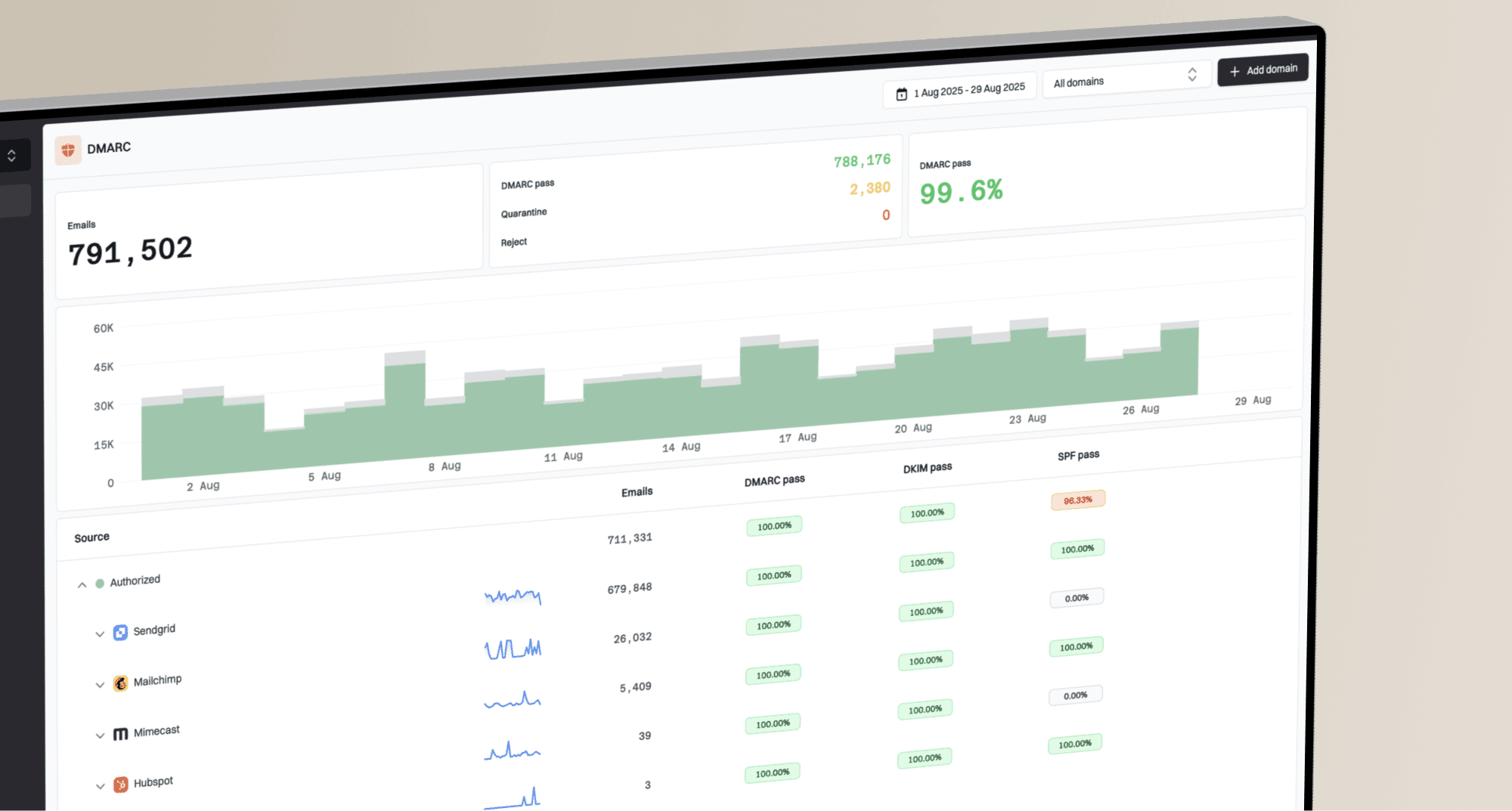What causes '5.7.1 Email rejected due to transformation error' bounces from Apple's privaterelay.appleid.com and how to fix it?

Michael Ko
Co-founder & CEO, Suped
Published 3 Jul 2025
Updated 16 Aug 2025
8 min read

 Apple's Private Relay service, which is a key component of their Sign in with Apple feature. It is a critical deliverability problem, especially for transactional emails like double opt-in messages.
Apple's Private Relay service, which is a key component of their Sign in with Apple feature. It is a critical deliverability problem, especially for transactional emails like double opt-in messages. Apple generates a unique, anonymous email address (e.g., xxxx@privaterelay.appleid.com) to protect their privacy. Your email must be sent to this relayed address, and Apple's system then transforms it to the user's actual email. When this transformation fails, you receive the 5.7.1 Email rejected due to transformation error bounce.
Apple generates a unique, anonymous email address (e.g., xxxx@privaterelay.appleid.com) to protect their privacy. Your email must be sent to this relayed address, and Apple's system then transforms it to the user's actual email. When this transformation fails, you receive the 5.7.1 Email rejected due to transformation error bounce. Apple's ecosystem, particularly when dealing with Sign in with Apple addresses. Unlike general bounces (or blocklist issues), this is often about a specific misconfiguration or a temporary service issue on Apple's side, rather than your sender reputation or content.
Apple's ecosystem, particularly when dealing with Sign in with Apple addresses. Unlike general bounces (or blocklist issues), this is often about a specific misconfiguration or a temporary service issue on Apple's side, rather than your sender reputation or content. Apple's Private Email Relay service. If your domain isn't registered and authenticated, Apple cannot reliably relay your emails to the user's actual inbox, leading to a bounce. This is a security measure to prevent unauthorized senders from spamming private relay addresses. You can find more information about this process in Apple's developer documentation.
Apple's Private Email Relay service. If your domain isn't registered and authenticated, Apple cannot reliably relay your emails to the user's actual inbox, leading to a bounce. This is a security measure to prevent unauthorized senders from spamming private relay addresses. You can find more information about this process in Apple's developer documentation.5.7.1 Email rejected due to transformation error
 Apple's end. This can sometimes happen during service updates or unexpected outages, causing widespread but temporary bounces. However, in most persistent cases, the issue lies with the sender's configuration.
Apple's end. This can sometimes happen during service updates or unexpected outages, causing widespread but temporary bounces. However, in most persistent cases, the issue lies with the sender's configuration. Apple's program rules for Sign in with Apple, which mandates that all sending domains are registered and authenticated. Without this, even if the user's private relay address is active, the email cannot be transformed and delivered. This is a crucial step for preventing policy-related bounce messages from Apple.
Apple's program rules for Sign in with Apple, which mandates that all sending domains are registered and authenticated. Without this, even if the user's private relay address is active, the email cannot be transformed and delivered. This is a crucial step for preventing policy-related bounce messages from Apple. Apple Developer account.
Apple Developer account. Apple users.
Apple users. Apple's end. While
Apple's end. While  Apple is generally quite reliable, service disruptions can occur. If you notice a sudden, widespread increase in these bounces that affects many of your private relay recipients simultaneously, and your domain is already correctly registered, it might indicate a system-wide problem that
Apple is generally quite reliable, service disruptions can occur. If you notice a sudden, widespread increase in these bounces that affects many of your private relay recipients simultaneously, and your domain is already correctly registered, it might indicate a system-wide problem that  Apple is likely already working to resolve.
Apple is likely already working to resolve. Apple's privacy settings, the private relay address may no longer transform to a valid destination, resulting in this specific bounce error. Regular list hygiene is important for maintaining good email deliverability across all recipient types.
Apple's privacy settings, the private relay address may no longer transform to a valid destination, resulting in this specific bounce error. Regular list hygiene is important for maintaining good email deliverability across all recipient types. Apple Developer account. This is a mandatory requirement for interacting with Sign in with Apple's Private Email Relay. Without this registration,
Apple Developer account. This is a mandatory requirement for interacting with Sign in with Apple's Private Email Relay. Without this registration,  Apple will reject your emails, as they are not coming from an authorized source. You can find more details on this specific configuration at Resend's knowledge base.
Apple will reject your emails, as they are not coming from an authorized source. You can find more details on this specific configuration at Resend's knowledge base. Apple Developer account. You will need to add and verify each domain that your application uses to send emails to
Apple Developer account. You will need to add and verify each domain that your application uses to send emails to  Apple Private Relay addresses. This involves proving ownership of the domain, often through DNS records like TXT records for SPF, DKIM, and DMARC. For more on email authentication protocols, consult our comprehensive guide.
Apple Private Relay addresses. This involves proving ownership of the domain, often through DNS records like TXT records for SPF, DKIM, and DMARC. For more on email authentication protocols, consult our comprehensive guide. Apple's Postmaster team or support, especially if you suspect a temporary issue on their side. You can often find contact information or troubleshooting guides at postmaster.icloud.com. Maintaining open communication channels can help resolve these specific deliverability challenges more quickly.
Apple's Postmaster team or support, especially if you suspect a temporary issue on their side. You can often find contact information or troubleshooting guides at postmaster.icloud.com. Maintaining open communication channels can help resolve these specific deliverability challenges more quickly. Apple Developer account. Any mismatch can also trigger transformation errors, as
Apple Developer account. Any mismatch can also trigger transformation errors, as  Apple enforces strict sender authentication for privacy reasons. It's a layer of security that complements standard email authentication protocols.
Apple enforces strict sender authentication for privacy reasons. It's a layer of security that complements standard email authentication protocols.Cause | Solution |
|---|---|
Unregistered sending domain: Your domain sending emails to @privaterelay.appleid.com is not registered with  Apple. Apple. | Register domains: Add and verify all sending domains within your  Apple Developer account. Apple Developer account. |
Invalid private relay address: The user's private relay address is no longer active. | Clean lists: Remove bounced addresses from your mailing lists promptly. |
Temporary Apple system issue: A rare, short-term problem on  Apple's end. Apple's end. | Monitor and contact support: Track bounce rates and contact  Apple Postmaster if bounces persist despite correct configuration. Apple Postmaster if bounces persist despite correct configuration. |
 Apple's stringent requirements. Regularly review your DMARC monitoring reports to identify any authentication failures that might contribute to deliverability issues.
Apple's stringent requirements. Regularly review your DMARC monitoring reports to identify any authentication failures that might contribute to deliverability issues. Apple's privacy and security protocols for Sign in with Apple addresses. The primary solution revolves around registering and authenticating your sending domains within your
Apple's privacy and security protocols for Sign in with Apple addresses. The primary solution revolves around registering and authenticating your sending domains within your  Apple Developer account. Without this fundamental step,
Apple Developer account. Without this fundamental step,  Apple cannot process the email relay, leading to bounces.
Apple cannot process the email relay, leading to bounces. Apple's end or invalid user IDs can occasionally contribute to these errors, the vast majority of cases point back to sender configuration. Prioritizing domain registration ensures that your email infrastructure is recognized and trusted by
Apple's end or invalid user IDs can occasionally contribute to these errors, the vast majority of cases point back to sender configuration. Prioritizing domain registration ensures that your email infrastructure is recognized and trusted by  Apple's stringent email relay service.
Apple's stringent email relay service. . This approach not only improves deliverability but also strengthens your overall email program and sender reputation.
. This approach not only improves deliverability but also strengthens your overall email program and sender reputation.